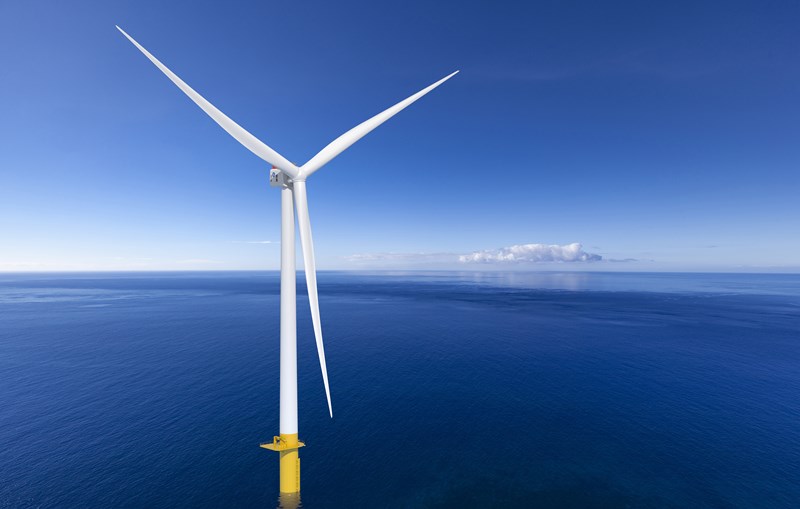Offshore wind developers building Northeast supply chain: the United States has a vast offshore wind energy resource, and the business is booming. Currently, 15 active leasing zones are undergoing various levels of development. If hardware and materials can be manufactured in the United States, the prospects will be even greater in the future.
Offshore Wind Development:
Offshore wind development is growing all along the Atlantic Coast by offshore developers, and it will most probably depend on a mix of European supply chain assistance and a number of US ports. Research, production, transport, building, maintenance, and servicing are all covered by the offshore wind supply chain.
According to the American Wind Energy Association (AWEA), wind energy has a maximum power of 2,000 gigawatts, which is about double the country’s present electricity consumption. Whereas the future commercial-scale offshore projects in US waters are likely to be based on well-known European producers, this is not considered a long-term option.
The construction industry has long recognized that developing its local supply chain is essential to executing projects on time and on budget.
In the last two years, governments along the East Coast of the United States have stated progressively growth aims for offshore wind development.
To give just one current example, New York virtually tripled its offshore wind plan to 9,000 megawatts by 2035 in January of this year.
Big targets and lease areas in future:
The following are major industry aspects needed to reach a utility-scale build-out of America’s offshore wind generating capacity of nearly $70 billion by 2030:
- More than 1,700 offshore wind turbines and towers for $29.6 billion.
- More than 1,750 offshore turbine and substation foundations for $16.2 billion.
- More than 8,000 kilometers of upland, export, and array cables for $10.3 billion.
- More than 60 onshore and offshore substations for $6.8 billion.
- Marine support, insurance, and project management for $5.3 billion.
Total Amount by 2030: $68.2 billion
Furthermore, $5.3 billion is expected to be involved in marine service, security, and project management operations in the industry.
The study predicts offshore wind power shrinking on a state-by-state, year-by-year basis. By 2030 New York is expected to arrange procurements worth several megawatts per two years.
McClellan said, “she regularly hears from suppliers. We have a good idea of how much land has been leased. The project developers who have leases are people we trust. We’ve seen dates for development proposals, as well as estimates for when they’ll be operational and in the water. And we’re aware of the big [state] objectives.”
“None of that signifies something to us in terms of understanding what it implies in terms of a business potential,” they continued.
The offshore wind sector is expected to generate an entire manufacturing industry in the United States, which will grow as a result of capital, agreements, production, employment, and operations.
How Likely Is This?
For a longer run, it is clear that keeping large manufacturing capability in coastal US states makes much more sense than producing parts elsewhere and shipping them across the ocean to their final destination. Nevertheless, the industry will demand a lot of foreign equipment and expertise in the immediate run.
International free trade has aided in the development of a favorable offshore wind company GBKSOFT by cutting prices and quickening development. Sadly, this has had the opposite impact on the local economy, with some communities failing to gain from an investment. As a result, political and public commitment to offshore wind initiatives may be weakened.
This raises a challenge for everyone involved: losing local support risks jeopardizing the US offshore wind business, which is still in its development. The advantages of free trade, particularly its important role in lowering the Levelized Cost of Energy (LCOE) must be weighed against the risks of alienating local people, investors, and governmental groupings.
There are no specific solutions as to which parts will be manufactured in the United States, whose companies will manufacture them, or where this will take place. New York, New Jersey, Maryland, Virginia, and Rhode Island are all competing for a key position in the offshore wind industry.
The turbine nacelle, which will be shipped from Europe, is one piece that is uncertain to be manufactured in the United States in the coming years. Outside of China, Siemens Gamesa and MHI Vestas lead the offshore wind turbine business, with GE Renewable Energy of Paris’s heavy investments to cope.
According to Stephanie McClellan, a director at the Renewables Consulting Group, many other significant systems, such as foundations, buildings, and blades, are perfectly acceptable for U.S. manufacturing.
Lucas Noah, armed with a Bachelor’s degree in Information & Technology, stands as a prominent figure in the realm of tech journalism. Currently holding the position of Senior Admin, Lucas contributes his expertise to two esteemed companies: OceanaExpress LLC and CreativeOutrank LLC. His... Read more
